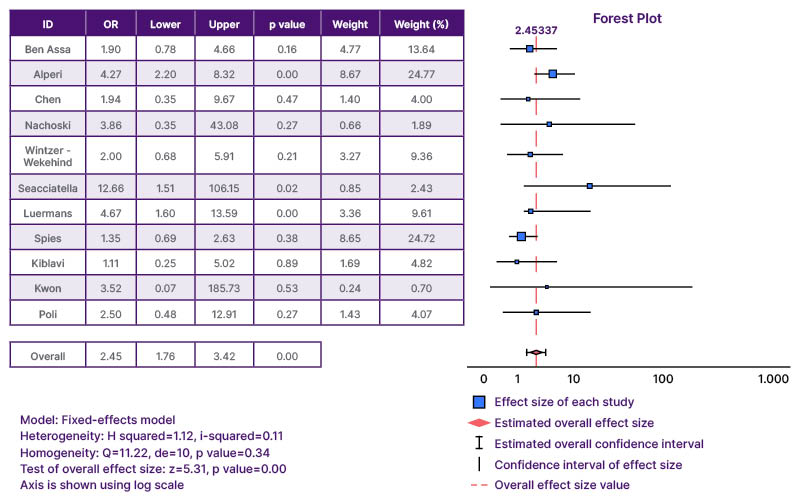BACKGROUND
Patent foramen ovale (PFO) is frequently identified in patients over 60 years old who present with cryptogenic stroke. However, whether PFO closure benefits older patients with both PFO and cryptogenic stroke is unknown, as randomised controlled trials have predominantly enrolled patients younger than 60 years of age. The authors’ objective was to compare the outcomes of PFO closure in patients over 60 years of age with those under 60 years, to evaluate the safety and efficacy of the procedure for both age groups.1
METHODS
MEDLINE, Cochrane, and Web of Science were systematically searched from inception to December 2024. Only observational studies comparing the efficacy of transcatheter PFO closure between older patients (>60 years) and younger patients (<60 years)were included.1
RESULTS
A total of 12 studies, comprising 5,909 patients, were included in the analysis. Among them, 2,151 patients were older than 60 years of age, while 3,758 were younger. Over a mean follow-up of 4.32 years, all-cause mortality was significantly higher in older group compared to the younger group (odd ratio [OR]: 2.647; 95% CI: 1.561–4.489; p<0.05). The older group had a significantly increased risk of recurrent ischaemic events (OR: 2.453; 95% CI: 1.762–3.417; p<0.001; Figure 1) and developing atrial fibrillation (OR: 2.698; 95% CI: 1.310–5.013; p<0.001). Moreover, older patients had a higher risk of presenting with a residual shunt post-procedure, although this did not reach statistical significance (OR: 1.265; 95% CI: 0.934–1.714; p=0.129). Egger’s regression test showed no evidence of significant publication bias in the meta-analysis.1

Figure 1: Forest plot showing a significantly increased risk of recurrent ischaemic events in elderly patients.
OR: odds ratio.
CONCLUSION
This meta-analysis reveals notable differences in outcomes between older and younger patients undergoing transcatheter PFO closure for cryptogenic stroke. Older patients exhibited higher rates of all-cause mortality, recurrent ischaemic events, and atrial fibrillation compared to younger individuals. These results underscore the need for careful patient selection and individualised risk assessment when considering PFO closure in older populations. Further randomised clinical trials are needed to clarify the long-term efficacy and safety of PFO closure in older adults.1







